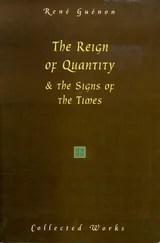[18] Aleson, Anales de Navarra, tom. iv. pp. 548–554.—Abarca, Reyes de Aragon, tom. ii. fol. 251.—Zurita, Anales, tom. iv. fol. 60–69.
[19] Abarca, Reyes de Aragon, ubi supra.—Zurita, Anales, tom. iv. fol. 70–75.—Aleson, Anales de Navarra, tom. iv. p. 556.
[20] L. Marineo, Cosas Memorables, fol. 108.—Zurita, Anales, lib. 17, cap. 3.—Aleson, Anales de Navarra, tom. iv. pp. 556, 557.—Castillo, Crónica, cap. 27.
[21] L. Marineo, Cosas Memorables, fol. 108, 109.—Abarca, Reyes de Aragon, tom. ii. fol. 252.—Zurita, Anales, lib. 17, cap. 45.—Aleson, Anales de Navarra, tom. ii. p. 357.
[22] Aleson, Anales de Navarra, tom. ii. p. 358.—Zurita, Anales, lib. 17, cap. 6.—Abarca, Reyes de Aragon, tom. ii. fol. 253.—L. Marineo, Cosas Memorables, fol. 111.
[23] Zurita, Anales, lib. 17, cap. 6.—L. Marineo, Cosas Memorables, fol. 111.
[24] Castillo, Crónica, cap. 28.—Abarca, Reyes de Aragon, fol. 253, 254. —L. Marineo, Cosas Memorables, fol. 111, 112.—Aleson, Anales de Navarra, tom. iv. pp. 559, 560.—The inhabitants of Tarraca closed their gates upon the queen, and rung the bells on her approach, the signal of alarm on the appearance of an enemy, or for the pursuit of a malefactor.
[25] Alonso de Palencia, Crónica, MS., part. 2, cap. 51.—L. Marineo, Cosas Memorables, fol. 114.—Aleson, Anales de Navarra, tom. iv. pp. 561- 563.—Zurita, Anales, cap. 19, 24.
[26] L. Marineo, Cosas Memorables, fol. 106.—"Por quanto era la templança y mesura de aquel principe; tan grande el concierto y su criança y costumbres, la limpieza de su vida, su liberalidad y magnificencia, y finalmente su dulce conversacion, que ninguna cosa en el faltava de aquellas que pertenescen a recta vivir; y que arman el verdadero y perfecto principe y señor."
[27] Gundisalvus Garsias, apud Nic. Antonio, Bibliotheca Vetus, tom. ii. p. 281.
[28] Nic. Antonio, Bibliotheca Vetus, tom. ii. pp. 281, 282.—Mariana, Hist. de España, tom. ii. p. 434.
[29] This treaty was signed at Olit in Navarre, April 12th, 1462.—Zurita, Anales, lib. 17, cap. 38, 39.—Gaillard, Rivalité, tom. iii. p. 235.— Gaillard confounds it with the subsequent one made in the month of May, near the town of Salvatierra in Bearne.
[30] Ferreras, Hist. d'Espagne, tom., vii. p. 110.
[31] Hist. du Royaume de Navarre, p. 496.—Aleson, Anales de Navarra, tom. iv. pp. 590–593.—Abarca, Reyes de Aragon, tom. ii. fol. 258, 259.— Zurita, Anales, lib. 17, cap. 38.
[32] Lebrija, De Bello Navariensi, (Granatae, 1545,) lib. 1, cap. 1, fol. 74.—Aleson, Anales de Navarra, ubi supra.—Zurita, Anales, lib. 17, cap. 38.—The Spanish historians are not agreed as to the time or even mode of Blanche's death. All concur, however, in attributing it to assassination, and most of them, with the learned Antonio Lebrija, a contemporary, (loc. cit.,) in imputing it to poison. The fact of her death, which Aleson, on I know not what authority, refers to the 2d of December, 1464, was not publicly disclosed till some months after its occurrence, when disclosure became necessary in consequence of the proposed interposition of the Navarrese cortes.
[33] Alonso de Palencia, Corónica, MS., part. 2, cap. 51.—Zurita, Anales, tom. iv. fol. 98.—Abarca, Reyes de Aragon, tom. ii. fol. 256.—Aleson, Anales de Navarra, tom. iv. pp. 563 et seq.—L. Marineo, Cosas Memorables, fol. 114.—According to Lanuza, who wrote nearly two centuries after the death of Carlos, the flesh upon his right arm, which had been amputated for the purpose of a more convenient application to the diseased members of the pilgrims who visited his shrine, remained in his day in a perfectly sound and healthful state! (Historias Ecclesiásticas y Seculares de Aragon, (Zaragoza, 1622,) tom. i. p. 553.) Aleson wonders that any should doubt the truth of miracles, attested by the monks of the very monastery in which Carlos was interred.
[34] L. Marineo, Cosas Memorables, fol. 116.—Alonso de Palencia, Corónica, MS., part. 2, cap. 51.—Zurita, Anales, tom. iv. fol. 113. The Spaniards, deriving the knowledge of artillery from the Arabs, had become familiar with it before the other nations of Christendom. The affirmation of Zurita, however, that 5000 balls were fired from the battery of the besiegers at Gerona in one day, is perfectly absurd. So little was the science of gunnery advanced in other parts of Europe at this period, and indeed later, that it was usual for a field-piece not to be discharged more than twice in the course of an action, if we may credit Machiavelli, who, indeed, recommends dispensing with the use of artillery altogether. Arte della Guerra, lib. 3. (Opere, Genova, 1798.)
[35] Alonso de Palencia, Corónica, MS., part. 2, c. 51.—L. Marineo, Cosas Memorables, fol. 116.—Zurita, Anales, tom. iv. fol. 113.—Abarca, Reyes de Aragon, tom. ii. fol. 259.
[36] Zurita, Anales, tom. iv. fol. 111.—Another 100,000 crowns were to be paid in case further assistance should be required from the French monarch after the reduction of Barcelona. This treaty has been incorrectly reported by most of the French and all the Spanish historians whom I have consulted, save the accurate Zurita. An abstract from the original documents, compiled by the Abbé Legrand, has been given by M. Petitot in his recent edition of the Collection des Mémoires relatifs à l'Histoire de France, (Paris, 1836,) tom. xi. Introd. p. 245.
[37] A French lance, it may be stated, of that day, according to L. Marineo, was accompanied by two horsemen; so that the whole contingent of cavalry to be furnished on this occasion amounted to 2100. (Cosas Memorables, fol. 117.) Nothing could be more indeterminate than the complement of a lance in the Middle Ages. It is not unusual to find it reckoned at five or six horsemen.
[38] Zurita, Anales, tom. iv. fol. 113–115.—Alonso de Palencia, Corónica, MS., part. 2, cap. 1.
[39] In conformity with the famous verdict given by Louis XI. at Bayonne, April 23d, 1463, previously to the interview between him and Henry IV. on the shores of the Bidassoa. See Part I. Chap. 3, of this History.
[40] This was the battle-ground of Julius Caesar in his wars with Pompey. See his ingenious military manoeuvre as simply narrated in his own Commentaries, (De Bello Civili, tom. i. p. 54,) and by Lucan, (Pharsalia, lib. 4,) with his usual swell of hyperbole.
[41] The cold was so intense at the siege of Amposta, that serpents of an enormous magnitude are reported by L. Marineo to have descended from the mountains, and taken refuge in the camp of the besiegers. Portentous and supernatural voices were frequently heard during the nights. Indeed, the superstition of the soldiers appears to have been so lively as to have prepared them for seeing and hearing anything.
[42] Faria y Sousa, Europa Portuguesa, tom. ii. p. 390.—Alonso de Palencia, MS., part. 2, cap. 60, 61—Castillo, Crónica, pp. 43, 44, 46, 49, 50, 54.—Zurita, Anales, tom. ii. fol. 116, 124, 127, 128, 130, 137, 147.—M. La Clède states, that "Don Pedro no sooner arrived in Catalonia, than he was poisoned."(Histoire Générale de Portugal, (Paris, 1735,) tom. iii. p. 245.) It must have been a very slow poison. He arrived January 21st, 1464, and died June 29th, 1466.
[43] Sir Walter Scott, in his "Anne of Geierstein," has brought into full relief the ridiculous side of René's character. The good king's fondness for poetry and the arts, however, although showing itself occasionally in puerile eccentricities, may compare advantageously with the coarse appetites and mischievous activity of most of the contemporary princes. After all, the best tribute to his worth was the earnest attachment of his people. His biography has been well and diligently compiled by the viscount of Villeneuve Bargemont, (Histoire de René d'Anjou, Paris, 1825,) who has, however, indulged in greater detail than was perhaps to have been desired by René, or his readers.
Читать дальше












